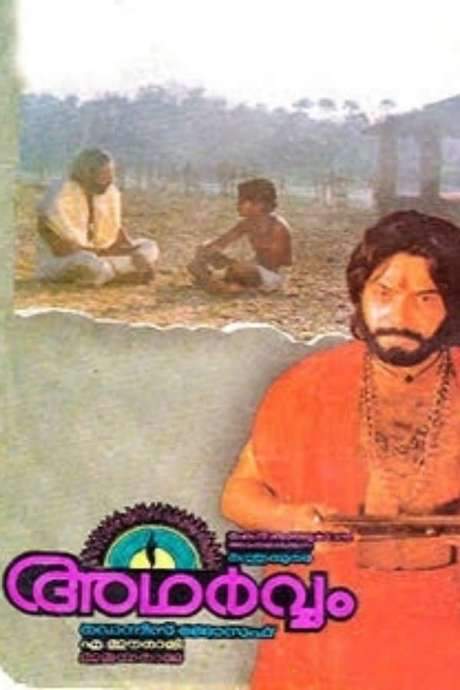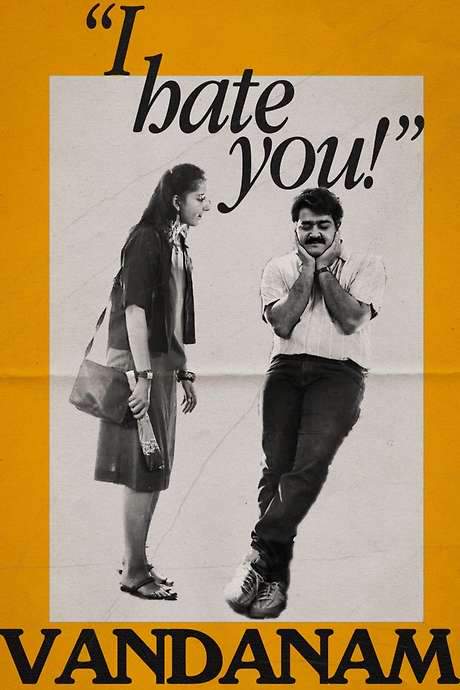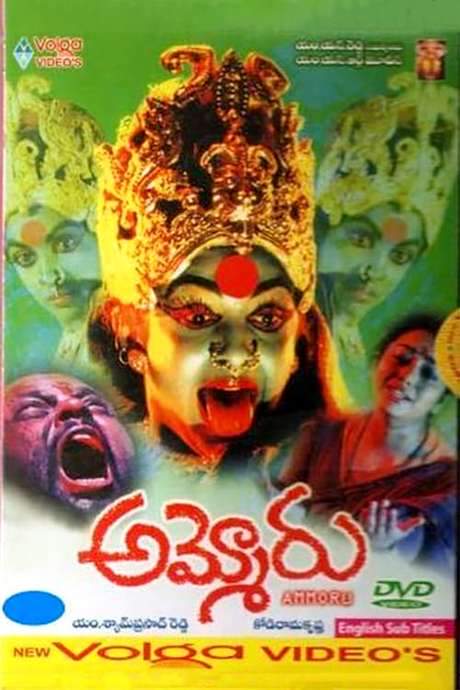Warning: spoilers below!
Haven’t seen Vayanadan Thampan yet? This summary contains major spoilers. Bookmark the page, watch the movie, and come back for the full breakdown. If you're ready, scroll on and relive the story!
Vayanadan Thampan (1978) – Full Plot Summary & Ending Explained
Read the complete plot breakdown of Vayanadan Thampan (1978), including all key story events, major twists, and the ending explained in detail. Discover what really happened—and what it all means.
Vayanadan Thampan, a fading feudal warlord, is portrayed by Kamal Haasan in a saga that opens in the early 19th century within the ruins of his fortress. Desperation for perpetual youth drives him to strike a dark pact with the demon Karimuthey, who promises Thampan everlasting life on one hard condition: at specific moments of his life, he must offer ten virgin girls. The agreement comes with a chilling caveat—each sacrifice grants a glass of the nectar of youth that reverses Thampan’s age, but failure to provide the promised victims will drain his energy and leave his body rotten and empty. With this grim deal sealed, the first vial of youth arrives, and Thampan’s youth is restored, fueling a dangerous pattern that will pattern his life for years to come.
From that point, Thampan begins a cycle of seduction under shifting guises, targeting young women who belong to influential families. The first victim is Kochammani, the heiress of the noble Tharayil Kurup lineage. Thampan appears before her family as a charming, wealthy prince from Wayanad, and while the elders entertain the notion of marriage, the immediate plan becomes more urgent as he uses his charms to abduct Kochammani. The elder brother Kunjambu musters help, but Thampan’s magical ruse undermines their efforts, and in a confrontation that tests the family’s resolve, he drags Kochammani away. By the time the family learns what has happened, the mask of youth slips and Thampan offers Kochammani to Karimurthy, securing the second glass of nectar that once again restores his youth. The Tharayil and Koyambadu families vow vengeance, convinced that a single, elusive magician is behind the violence, and they set out to track him across generations, certain that he will return.
As years pass, a new target is chosen in Nabissa, the daughter of a wealthy trader. Thampan moves through the era as Ibrahim, a young trader, and he seduces Nabissa while also presenting himself as Kochammani’s imagined nephew, to gain entry into the Tharayil household. Nabissa’s betrothal to Abdulla is set, but the ploy culminates in an escape with Nabissa. The chase that follows leads to a coordinated pursuit by Nabissa’s family and their allies, who piece together clues that paint a single picture: the mysterious young man is not a nephew at all but a relentless predator who assumes multiple identities. Old tribal tales echo the fear of a black magician, and the vow for revenge intensifies, binding several families across years and villages in a shared, enduring search.
Time moves forward and Thampan’s appetite broadens. He finds Annamma, a Christian girl, and takes on the disguise of Thomas, a college lecturer, to win her trust. Annamma initially suspects the voices of devils, but Thampan’s ruse convinces her for a time, and they marry at a registrar. On their wedding night, Annamma’s faith and curiosity pull at the strands of illusion, and she manages to tempt Thampan into a sexual relationship, thereby losing her virginity and complicating Karimurthy’s demand for a pure, sacrificial offering. Thampan finds himself drawn to Annamma, which alarms Karimurthy and his growing impatience. Annamma becomes pregnant, and the revelation leaves Thampan vulnerable and exposed. In a moment of reckoning, Thampan abandons Anna’s home, surrendering himself to Karimurthy. The demon grants a final chance—youth again, but with a stern condition: he must abandon relationships and continue to offer virgin girls as a sacrifice.
The story follows the new generation as Annamma gives birth to a daughter and keeps her safe from the shadow of Thampan’s past. Generations later, the era shifts to British-ruled Malabar, with police coverage and newspapers reporting on the disappearances of tribal girls linked to the same pattern of predatory behavior. Anna, now aware of the full extent of what her husband was, collaborates with Abdulla and others who have suffered as the old families do, forming a joint committee to uncover the mystery. The hunt grows more urgent as Thampan’s latest target appears in Elisy, a girl found at a picnic and photographed by Thampan when he presents himself as Frankie, a photographer. Elisy becomes a close friend, and Anna recognizes the danger as she studies a photograph that reveals Elisy’s true lineage: she is Annamma’s daughter, the very child Anna had once sheltered at a boarding school.
The revelation unleashes a tense confrontation. Anna, Abdulla, and the elders converge on Thampan’s fortress, knowing the truth about Elisy’s identity and Thampan’s volatile history. As the trap closes, Thampan, now forced to confront the consequences of his own deception, shifts into old age and loses his ability to fight back. In the final clash, Anna presents Elisy as his daughter, and the truth shatters the demon’s hold. Karimurthy, enraged, retaliates by draining Thampan of his stolen energies, and the once-powerful warlord is left to rot back into his century-old decay. The story closes on the haunting image of a life spent chasing youth and power, ending in a ruin that mirrors the desolation of the pact that started it all.
In this sweeping, mythic saga, the tale unfolds as a warning about the price of unchecked desire and the dangers of bargains with dark forces. It weaves together themes of family loyalty across generations, the rise of modernity (railways and British administration) with ancient superstition, and the enduring arc of vengeance that binds the different families together. The film’s atmosphere—set against a backdrop of ruined fortresses, shifting identities, and the ever-present specter of Karimuthey—remains faithful to a story about life’s fragile line between youth and age, love and manipulation, and the ultimate reckoning that comes when truth collides with the supernatural.
Last Updated: October 09, 2025 at 11:27
Unlock the Full Story of Vayanadan Thampan
Don't stop at just watching — explore Vayanadan Thampan in full detail. From the complete plot summary and scene-by-scene timeline to character breakdowns, thematic analysis, and a deep dive into the ending — every page helps you truly understand what Vayanadan Thampan is all about. Plus, discover what's next after the movie.
Vayanadan Thampan Timeline
Track the full timeline of Vayanadan Thampan with every major event arranged chronologically. Perfect for decoding non-linear storytelling, flashbacks, or parallel narratives with a clear scene-by-scene breakdown.

Similar Movies to Vayanadan Thampan
Discover movies like Vayanadan Thampan that share similar genres, themes, and storytelling elements. Whether you’re drawn to the atmosphere, character arcs, or plot structure, these curated recommendations will help you explore more films you’ll love.
Explore More About Movie Vayanadan Thampan
Vayanadan Thampan (1978) Scene-by-Scene Movie Timeline
Vayanadan Thampan (1978) Movie Characters, Themes & Settings
Vayanadan Thampan (1978) Spoiler-Free Summary & Key Flow
Movies Like Vayanadan Thampan – Similar Titles You’ll Enjoy
Vanamagan (2017) Detailed Story Recap
Anbanavan Asaradhavan Adangadhavan (2017) Story Summary & Characters
The Kingdom of Var (2019) Film Overview & Timeline
Vattaram (2006) Complete Plot Breakdown
Ee Thanutha Veluppan Kalathu (1990) Film Overview & Timeline
Adharvam (1989) Full Summary & Key Details
Veerana (1988) Spoiler-Packed Plot Recap
Vandanam (1989) Ending Explained & Film Insights
Vezham (2022) Full Movie Breakdown
Vamanan (2009) Ending Explained & Film Insights
Ammoru (1995) Complete Plot Breakdown
Manichitrathazhu (1993) Full Summary & Key Details
Vattam (2022) Spoiler-Packed Plot Recap
Voodoo Man (1944) Full Movie Breakdown
Tantiram (2023) Full Movie Breakdown


















